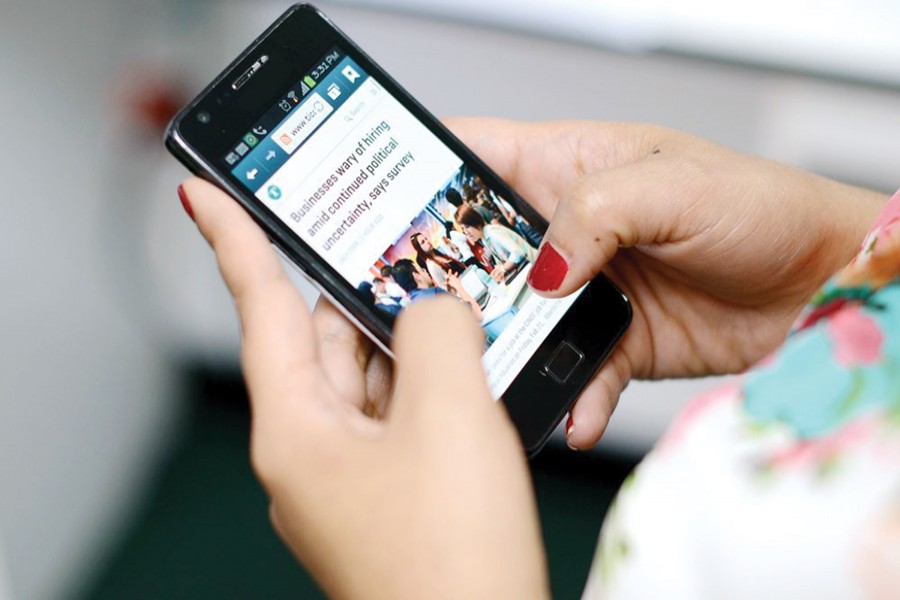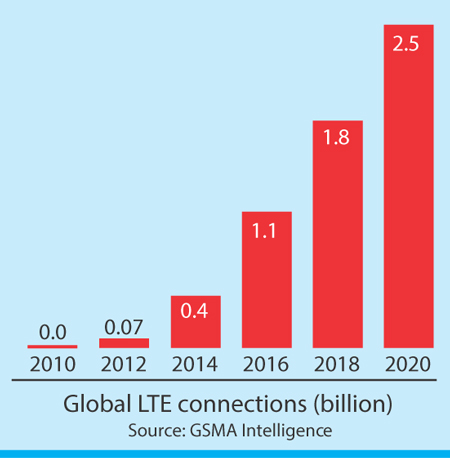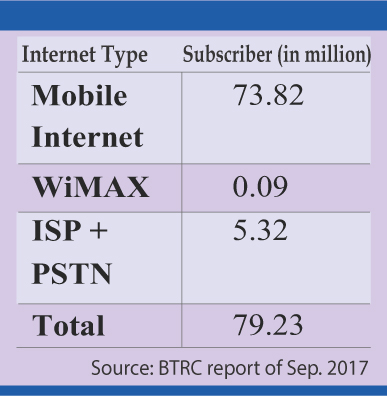
 The term 4G stands for 'fourth generation' and refers to mobile network technology that enables 4G-compatible phones to connect to the internet faster than ever before. It is also known as LTE (long-term evolution) technology. The difference between 4G and 3G is that with 4G we can do everything 3G can but faster (up to 10x times) and smoother than ever before. After being launched in the early days of this decade, 4G is growing at an accelerated rate in the global area. According to GSMA Intelligence, global 4G connections will reach 2.5 billion by the year 2020. Experts predict that 4G is set to be the catalyst for a host of new, entertainment-focused mobile internet services, the like of which would have been unimaginable just a few short years ago. The benefits of 4G can be experienced from three major aspects.
The term 4G stands for 'fourth generation' and refers to mobile network technology that enables 4G-compatible phones to connect to the internet faster than ever before. It is also known as LTE (long-term evolution) technology. The difference between 4G and 3G is that with 4G we can do everything 3G can but faster (up to 10x times) and smoother than ever before. After being launched in the early days of this decade, 4G is growing at an accelerated rate in the global area. According to GSMA Intelligence, global 4G connections will reach 2.5 billion by the year 2020. Experts predict that 4G is set to be the catalyst for a host of new, entertainment-focused mobile internet services, the like of which would have been unimaginable just a few short years ago. The benefits of 4G can be experienced from three major aspects.

Higher user speeds: 4G enables users to download more content than 3G in the same amount of time. This makes data-intensive, on-the-go downloads such as music or high-definition video streaming a reality. Mobile entertainment providers are expected to take advantage of this by launching extensive movie-and TV-download services. These will harness the power of 4G technology to deliver content, such as full-length movies in high definition, directly to a 4G mobile phone and streamed in a matter of seconds or downloaded in a matter of minutes. Already all major telecom operators have launched their entertainment apps: Bioscope, Banglaflix, and Robi TV. Besides these, international players like Netflix, Iflix are also available in Bangladesh now.
Faster connection times: 4G requires 95 per cent less time to connect than the most advanced 3G service (HSPA+), assuring an "always-on"-service experience. This paves the way for voice calls through internet, also known as Vo4G. This should drastically improve the voice quality and consistency through mobile network. Faster mobile internet connectivity will also bring an incredibly smooth browsing experience to 4G-compatible phones, thus calling time once and for all on the days of web pages failing to load at peak usage times.
Less round-trip latency: 4G offers a 50 per cent reduction in round-trip latency compared to HSPA+ (most advanced 3G technology), making real-time applications such as video calls, online gaming smoother than ever before. Especially the mobile gaming experience is set to be completely transformed, too, with faster connections offering more complex online multiplayer games that make current-generation titles look very rudimentary indeed. Online gamers know the challenge of "latency" they have to face during playing these games and the only solution was broadband internet. Due to this last feature of 4G, home broadband connection will become functionally redundant.
WHERE BANGLADESH STANDS: Bangladesh got onto the internet highway in 2012 through the launch of 3G services on a limited basis (only Teletalk, the state-owned mobile operator) and then full-scale launch in 2013. Right now almost all major parts of the country are under 3G coverage with approximately 5.2% of the population using 3G-enabled handsets (Newzoo's Global Mobile Market Report, April 2017). So it can be logically estimated that 4G-enabled handset penetration will be much lower, somewhere around 1.0% or less. Currently, Bangladesh has in total 79.23 million internet connections, of which a staggering 93% are through mobile internet.
 As per news reports on September 20, the government declared to have 4G services launched by the end of December 2017. According to the conditions set out by BTRC in the draft 4G guidelines, operators have to launch the service across all divisional cities within 9 months, district headquarters within 18 months, and nationwide within 3 years.
As per news reports on September 20, the government declared to have 4G services launched by the end of December 2017. According to the conditions set out by BTRC in the draft 4G guidelines, operators have to launch the service across all divisional cities within 9 months, district headquarters within 18 months, and nationwide within 3 years.
Challenges and Way Forward: The biggest challenge of 4G internet service in Bangladesh is handset penetration. As discussed earlier, less than 1.0% of current handsets in the Bangladesh market are 4G-enabled. This situation is not likely to change drastically in the near future either since percentage of 4G-enabled sets among all new handsets sold is also quite low. So even if 4G network is available, customers will not be able to enjoy the benefits without a 4G/LTE-enabled handset. 4G launch in neighboring India is a prime example of this where 4G uptake was very slow in the initial years due to a gap in the device ecosystem. The only way to address this issue is increasing the availability and affordability of 4G-enabled handsets on the market. Both the government and mobile operators need to play their respective roles in this process. The government needs to reduce the tax burden on 4G-enabled handsets to bring the price of these devices down. Similarly, telecom operators can also facilitate the process by collaborating with handset manufacturers and ensuring smooth availability of these handsets across all geographies of the country.
Service Quality: Another big issue all operators are expected to face is ensuring 4G service quality. The core essence of 4G is uninterrupted fast internet and this cannot be delivered with network glitches. As per customers' feedback, all telecom operators' connection has varying level of service disruption. The main reason behind this is network congestion by huge number of users within the limited bandwidth available to the operators. Solution to this issue is to provide sufficient bandwidth for 4G services. Given the present situation, it is likely that the operators need to purchase further spectrum from the government to ensure the service quality and hence the upcoming spectrum auction is quite critical.
Pricing: It will be interesting to see how the operators set the prices for internet packages for the 4G service. Given the high investment required on spectrum purchase and network development, it is likely that 4G internet price might go up in order for the operators to recoup their investment. However, they need to be cautious regarding this price hike since excessive high price might drive customers away from this service at an early stage.
4G can become an ideal tool to offer high-speed internet to the customers in Bangladesh. This will unlock the full potential of internet to Bangladeshi users, beyond the existing plethora of social media-based activities. If harnessed in the right manner, this can take us a long way towards building a knowledge-and information-based society.
The author has working experience in Bangladesh’s telecom industry and currently is pursuing MSc in Strategic Marketing at Cranfield School of Management.
© 2024 - All Rights with The Financial Express
